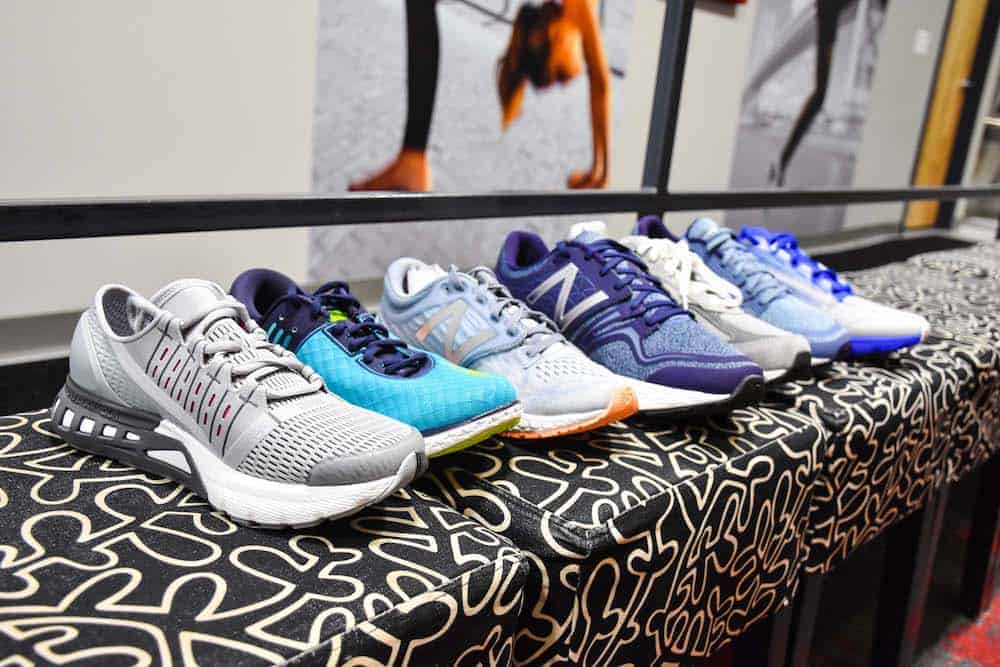Shoes are among those items of dressing that are not only required by consumers to be fashionable but also highly comfortable. An uncomfortable pair of shoes doesn’t only make a walk rather unpleasant, but may also result in serious health problems such as backache in the long run. Therefore it is advised to consider both the style as well as the quality of shoes when purchasing a pair.
However, even shoes that appear to be well-made may encounter issues in quality if examined closely. Apart from wear and tear caused by the usage of the shoes, a manufacturer may also be responsible for some defects found in shoes. This would result in unsatisfied customers as well as a potential loss of sales for the business due to the return of damaged products.
In some ways, the production process of shoes is quite similar to those of garments; involving a great deal of cutting and sewing, both by hand and by machine also. And even though shoes are made of more robust materials such as leather, rubber, and plastic, shoes are also susceptible to defects similar to those of garments. Even so, there are several defects that are pertinent to shoes only.
The following guide will help you in looking out for common defects in shoes regardless of whether it’s for professional or personal use: whether you’re a manager overlooking a shoe factory in India or a customer looking for the perfect pair of shoes, this guideline will help you tremendously.
How Do Experts Classify Quality Defects In Shoes?
Prior to a discussion regarding the common defects found in shoes, it would be beneficial to first see how QC control professionals mark quality defects into distinct classes on the basis of severity. The following three categories represent the most common quality defects found in shoes:
- Critical Defects: These represent the extremely damaging defects to the shoe that may either fail to meet mandatory regulations or pose a threat to the health and safety of the consumer.
- Major Defects: These defects directly impact the appearance, durability, and salability of the shoes. These defects result in customer dissatisfaction and result in loss of sales for the business.
- Minor Defects: these defects do not directly impact the wearability of the shoes, but do result in decreasing the overall quality standard of the shoes. The customers will not generally return the product but do result in lowering the desired standard of quality expected byte customers and promised by the brand.
Zone 1 And Zone 2 For Defect Classifications
Shoe experts and inspectors divide a general shoe into two zones, 1 and 2. Zone 1 being the more important zone because it is the area that is clearly visible to the consumer and hence the defects in this area will impact the quality of the shoes more than those defects found in zone 2 because it is the area that is less visible to the consumer.
It thus makes sense that any defect found in zone 1 would be classified as a major defect, whereas if the same defect is found in zone 2 it would be classified as a minor defect.
Now that a brief overview of classifying quality defects in shoes lets now proceed to the most common defects themselves:
Excess Of Glue, Wax Or Oil Found On The Shoe
An excess of glue, wax or oil is among the most frequent quality defects found in shoes. This is because most shoe production techniques make use of adhesives and other chemicals used to keep the shoe intact.
As factory workers often use these adhesives by hand, given that they want to produce a large number of shoes in a relatively short period of time given the excessive load of work and high demand, workers may be careless and may end up using too much of these chemicals.
Although removing these chemicals is a rather straightforward task, when noticed by customers it adds a rather unpleasant look to the shoes that do not add value to the customer’s experience with the given brand of shoes.
An excess of glue, wax or oil is found on both zone 1 and 2, with marks more likely to be visible on zone 1 as compared to 2; nonetheless, finding excessive adhesive chemical anywhere on the shoe is an unpleasant experience for the customer.
How Can You Prevent The Excessive Use Of These Adhesives On Shoes?
Simply put, workers should be more adequately trained so as to not use too much of these chemicals on the shoes. They would also benefit from a more relaxed work environment where the pressure to pursue deadlines is not too harsh so as to force workers into moving too quickly and making unnecessary mistakes.
It is also advisable for the QC inspection staff to closely look at each pair of shoes before it is packaged to clear off any excess material left- because it is a simple task to resolve while the shoes are still in the factory compared to a loss of brand name and sales when customer notice these chemicals and want an exchange or return.
Sharp protruding objects
Even though a rather uncommon defect, it is possible for the factory workers to mistakenly leave a sharp object such as a staple or a needle inside the shoe while manufacturing it; the object may also be inadequately stitched into the shoe so that it protrudes out and is liable to cause damage to the foot when worn.
How To Prevent Nails Or Sharp Objects From Being Found In Shoes?
The simplest way is to run the shoes under a machine that looks for needles or other sharp objects that may have been negligently left in the shoe. Another proposed measure is to have a QC staff carefully examine the shoes and find any sharp object that may have been left inside. If one is found, it is the responsibility to find the worker responsible and to educate him about being more careful in the future.
Degumming Or Weak Cementing
Compared to an excess of adhesive, degumming occurs when there is too little adhesive used to tie the sole of the shoe to the upper part- mostly in shoes with rubber soles such as sneakers. Because this defect directly impacts the functionality of the shoe, it is considered a major defect that leads to loss of sales and direly unsatisfied customers.
How Can You Prevent Degumming?
Firstly, the management should make sure that the workers are using an adhesive that is of good quality and suited for the materials and design being used. But an even more important aspect is when the workers do not apply enough adhesive so as to last during the intended life of the shoes. To ensure both of these conditions, management should offer a good training system for the workers to ensure that the quality and standard of the shoes are not compromised.
Asymmetry In Shoes
Shoes should ideally be a mirror-image of each other; same height, width, weight, and all other embellishments and designs. If you notice that a pattern or design seem off on one shoe compared to another, this is probably due to an issue in the cutting and fitting of the components. To check for asymmetry in shoes, both the shoes should be placed next to each other and viewed from different angles such as the front, rear, and side views.
If issues of asymmetry are found in shoes, they should be taken up with the manufacturers because no customer would want a pair of shoes that do not match each other. Your quality inspectors should also be in check regarding the symmetry of shoes before they are shipped to you.
Discrepancy In Shoe Sizes
It is rather unusual to find size difference in shoes falling in the same category because a standard shoe sizing tool is used for each size. However, it is possible that during sorting and packaging the shoes are wrong labeled and packaged as the incorrect size.
This would result in a serious defect because the shoes being sold would not match with the description present on the packaging, resulting in a quite definite exchange or return of the product.
This problem is most commonly present in factories that do not have any organized and formal layout or set-up, and so workers work in an unorganized environment where chances of mixing up shoes of different sizes are high.
If you find that the shoes you receive have frequent issues of incorrect labeling, then it would be beneficial to suggest to the manufacturer to better organize his warehouse and packaging facilities so that the chances of any mix up are reduced significantly.
Abrasion Marks Found On Shoes
Shoes aren’t just meant to facilitate comfortable walking; they’re also a style statement that often ties your whole look together. So finding any sort of abrasion marks on shoes is alarming for the business, especially if the surface of the shoes is glossy or made out of materials such as leather. Customers will not usually purchase shoes with abrasion marks on them, and so the business might lose out on a ton of potential sales.
How Can You Prevent Abrasion Marks?
Well, quite simply you should have a look at the working conditions and practices at the manufacturing factory. One of the reasons behind marks left on shoes is the inadequate handling of shoes by the workers: handling the product roughly or perhaps moving it around unnecessarily and thereby exposing the surface to scratches and abrasions.
A well functioning packaging system is also a great way to ensure that shoes do not come across any abrasions during transportation from the factory to the final consumer.
Having a golden sample inspected by you or a third-party inspection team is also a great way to make sure that shoes are free of any defects before they reach you as an importer- it is much more costly and time-consuming to fix defects when the shoes have been imported than when they are still at the factory.
Conclusion
Now that you know what defects to look out for in shoes, hopefully, your purchase will be a more educated one and spent on shoes of the right quality. If you’re an importer, it is advisable to have your inspection staff (and if you don’t have one, then a third-party inspection staff) to thoroughly go through the products before they are shipped to you.

